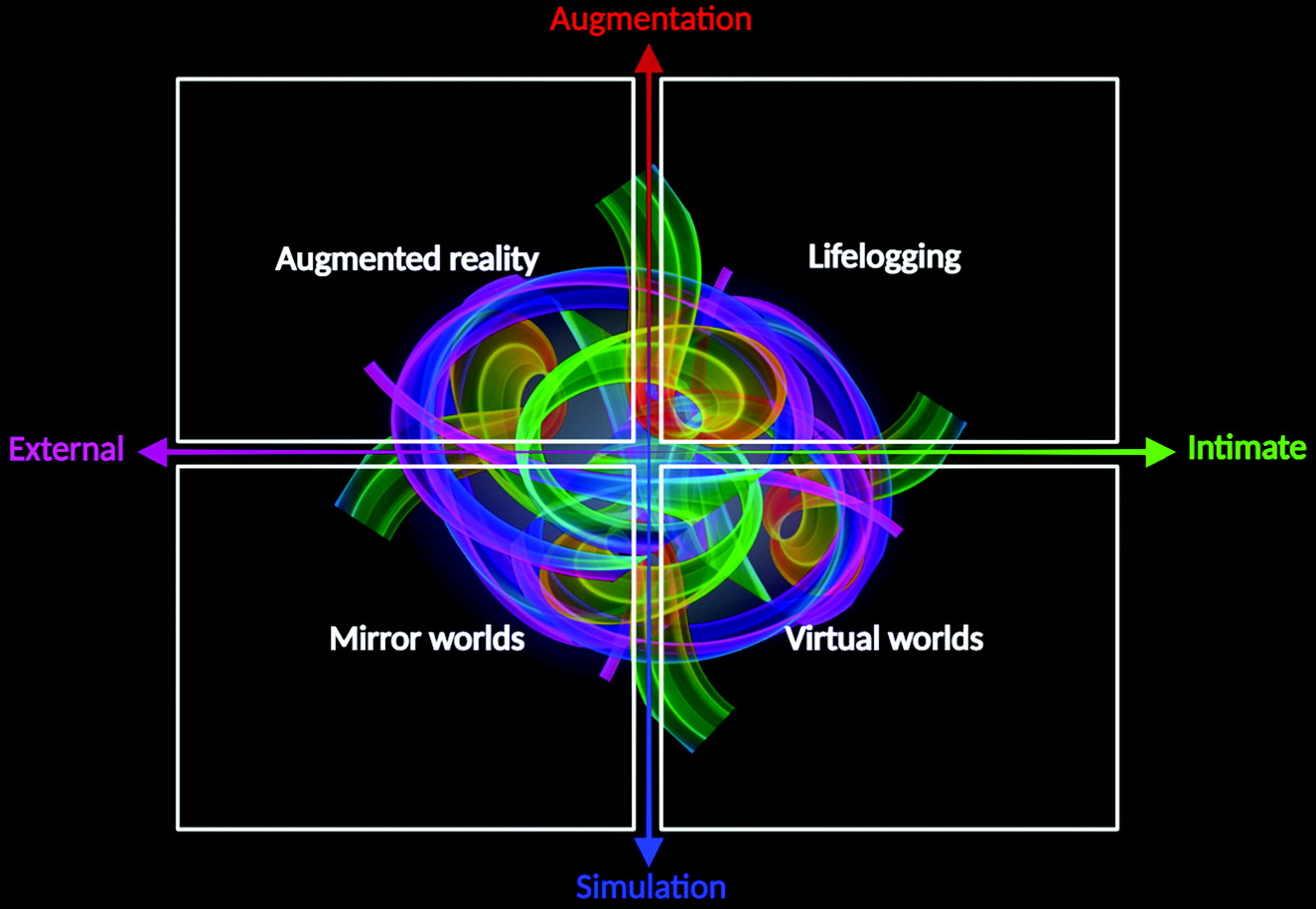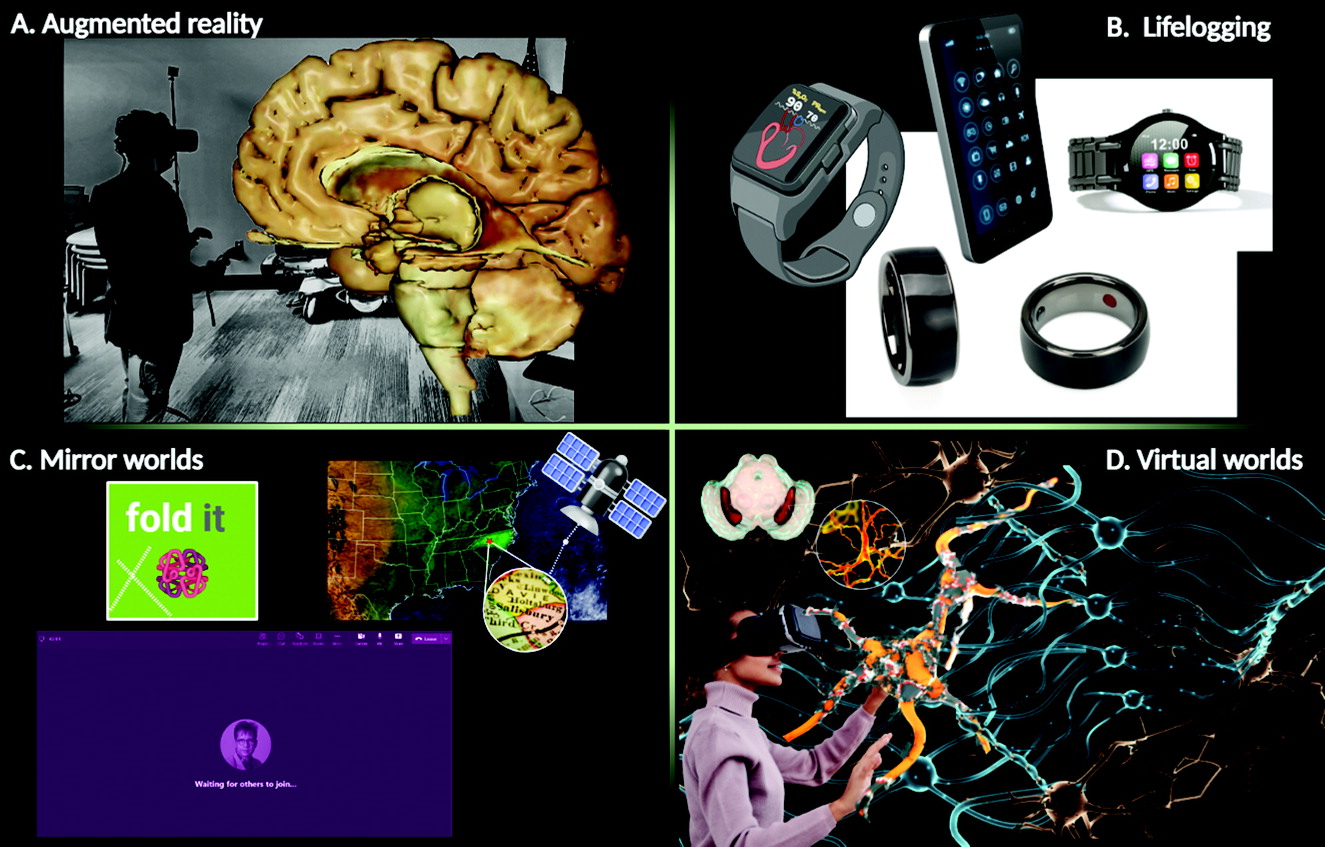Metaverse technologies have opened new horizons for innovations in medicine. Medical education and health care practices are embracing technological advancements to improve patient care (
2,
20–
22). A wide range of subspecialties, such as cardiology, emergency medicine, gastroenterology, gynecology, oncology, ophthalmology, and radiology, are employing metaverse technologies (
4,
22–
26). Mental health disciplines are also benefiting from metaverse innovations, specifically XR technologies (VR, AR, and mixed reality) (
27). VR technologies are among the most widely used advances in mental health interventions. VR exposure therapy (VRET) and AR exposure therapy have proven effective in treating specific phobias, posttraumatic stress disorder (PTSD), anxiety, attention-deficit hyperactivity disorder, substance-related disorders, depression, and eating disorders (
20,
28–
31).
VRET employs psychotherapeutic immersive paradigms that provide multisensory VR experiences to amplify the patient’s experiential engagement during treatment sessions (
27). VRET interventions are effective in reducing PTSD symptoms of active-duty and combat soldiers after military trauma (
32,
33). XR therapeutic benefits are based partly on its immersive capabilities that allow experiences at a digital multisensorial level and integrate a seamless human-computer interface (
27). Deepak Chopra indicated that “the metaverse guides us past the notion that mind, body, and spirit are separate” because the metaverse incorporates technologies (e.g., AR and VR) to rectify one’s dysfunctional reality by using virtual (functional) reality (
34). VR innovations allow for the reproduction of transcendental experiences (e.g., delivering joy, distraction, and positive affect in a soothing environment) (
34–
36). Higher-level cognitive functions (e.g., decision making and problem solving) may vary based on the body’s characteristics that the individual perceives as self-owned. A study performed by Banakou et al. used superintelligent (“Albert Einstein”) and average-intelligence virtual body avatars to illustrate this concept (
37). Participants who embodied the Einstein avatar performed cognitively better than those who embodied an average-intelligence avatar of an age similar to their own (
37). A similar influence of the owned body has been shown in social behavior studies. These experiments investigated whether acting through certain types of avatars (i.e., as players in video games) and the avatars’ actions could influence pro- or antisocial behaviors (194 subjects). Players choosing more heroic avatars were encouraged to behave in a more prosocial manner. The authors reported that after acting as a villain or superhero within the virtual world, participants modeled the behaviors of their chosen avatars when interacting with their fellow players in the real world. In addition, the investigators highlighted that role-taking activities supported behaviors consistent with the priming actions (i.e., activities of the heroic or villainous avatar) (
38). The introduction of avatars may support treatment engagement during psychotherapy (
39). Thus, the virtual world can serve as a vehicle for observation, simulation, and modeling, and avatars power these processes (
38). Additional benefits of avatar-integrated therapies include increases in treatment seeking via anonymity, reductions in communication barriers, facilitation of expression and exploration of client identity, and improvements in interventional settings by allowing therapists to control and manipulate the treatment conditions within the virtual environment (
39).
Metaverse technologies may establish an ideal scenario for mental health research (e.g., sense of body ownership) and the development of new therapies. The fact that real-life situations are difficult to replicate in the real world (i.e., during psychotherapy sessions) but can be safely recreated in cyberspace opens many possibilities for new therapeutic interventions (
28). For example, VRET has proven effective in replicating human reactions (e.g., fear-inducing situations generating social anxiety) in real social environments (
40,
41). Furthermore, VRET has been successfully used to reduce social anxiety associated with stuttering when speaking to those with authority or during public speaking (
42).
The COVID-19 pandemic has resulted in significant lifestyle changes worldwide. By extension, health care systems have transformed traditional health education and clinical care settings in an effort to decrease face-to-face interactions. Metaverse technologies are an effective alternative for remote care of certain chronic conditions and biometrically enhance care models involving mental health treatment. These treatments include mindfulness and cognitive-behavioral therapy, either guided by a therapist or as a self-help program (
43,
44). In addition, medical metaverse XR innovations may supplement current therapeutic approaches and expand mental health care access (
31).



